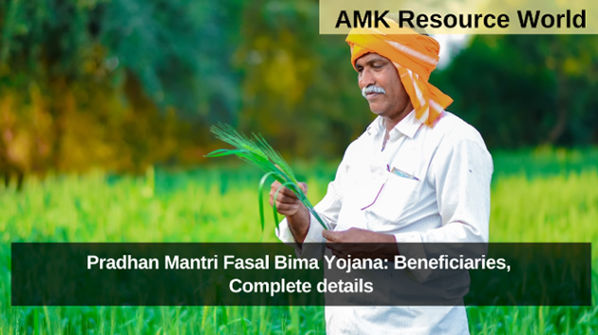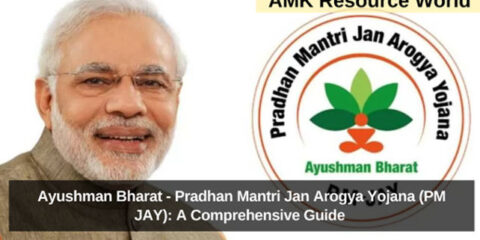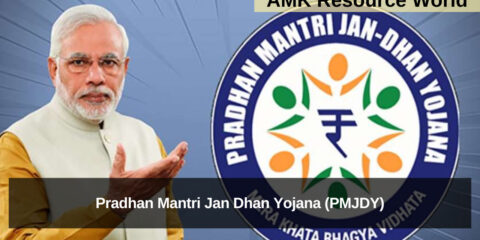The Pradhan Mantri Fasal Bima Yojana (PMFBY), launched on 13th January 2016, is a flagship agricultural insurance scheme introduced by the Government of India. It aims to provide comprehensive risk coverage to farmers against potential crop losses caused by natural calamities, pests, and diseases. This scheme is part of the government’s commitment to ensuring the welfare of farmers and strengthening the agricultural sector, which is the backbone of the Indian economy.
Pradhan Mantri Fasal Bima Yojana (PMFBY) was launched from Kharif 2016 with aim to support production in agriculture by providing an affordable crop insurance product to ensure comprehensive risk cover for crops of farmers against all non-preventable natural risks from pre-sowing to post-harvest stage. The Scheme has completed 16 crop seasons and is being implemented across States/Union Territories (UTs)
OBJECTIVES
The objectives of Pradhan Mantri Fasal Bima Yojana (PMFBY) seeks to address the critical challenges faced by Indian farmers, particularly those associated with unpredictable weather, market fluctuations, and crop failure. The key objectives of the scheme are
Providing financial support to farmers suffering crop loss/damage arising out of unforeseen events, Stabilizing the income of farmers to ensure their continuance in farming, Encouraging farmers to adopt innovative and modern agricultural practices, Ensuring credit worthiness of the farmers, crop diversification and enhancing growth and competitiveness of agriculture sector besides protecting the farmers from production risks, Promoting innovation & research of insurance and allied products so-as-to offer expanded choice to the farmers and the State Governments/UT Administrations
KEY FEATURES OF PMFBY
The PMFBY is distinct from earlier crop insurance schemes due to its comprehensive and farmer-friendly approach. Some notable features include:
Affordable Premium Rates: Farmers pay a minimal premium under the scheme: 2% for Kharif crops, 1.5% for Rabi crops, 5% for commercial and horticultural crops, The remaining premium is shared between the central and state governments, ensuring that farmers receive full insurance coverage without financial strain.
Wider Coverage: The scheme covers all food crops, oilseeds, and horticultural/commercial crops. It provides protection against Natural calamities (e.g., floods, droughts, cyclones), Pests and diseases, Post harvest losses due to specific risks like cyclones and unseasonal rain.
Technology Integration: Use of remote sensing technology, smartphones, and GPS for faster and more accurate crop damage assessments. The Crop Insurance App allows farmers to register, calculate premiums, and track claims.
Voluntary Participation: The scheme is voluntary for all farmers, including those with loans and those without loans.
Timely Settlement of Claims: PMFBY emphasizes timely assessment and settlement of claims to ensure farmers receive compensation without delays.
COVERAGE OF FARMERS
All farmers including sharecroppers and tenant farmers growing the notified crops in the notified areas are eligible for coverage. However, farmers should have insurable interest on the insured crops and lands. Such farmers are required to submit necessary documentary evidence of land records
The scheme is optional for all farmers including farmers who have been sanctioned short-term Seasonal Agricultural Operations (SAO) loans though Kisan Credit Card (KCC) for the notified crops from defined Financial Institutions (hereinafter referred to as Loanee farmers).
Existing Loanee farmers who do not want to get covered under the scheme have the option of opting-out from the Schemes by submitting requisite declaration to loan sanctioning bank branches any time during the year but at least seven days prior to the cut-off date for enrolment of farmers for the respective season. All those farmers who do not submit the declaration would be essentially covered
CONCLUSION
The Pradhan Mantri Fasal Bima Yojana has transformed the agricultural insurance landscape in India, providing critical financial support to farmers and safeguarding them against risks. By addressing the vulnerabilities of Indian farmers and ensuring timely compensation for crop losses, PMFBY has not only improved their quality of life but also contributed to the resilience and growth of the agricultural sector.
As India continues to prioritize farmer welfare, the PMFBY stands as a cornerstone initiative, ensuring that the backbone of the nation—its farmers—remains strong and prosperous. With continuous reforms and better implementation strategies, PMFBY is poised to become a global model for agricultural insurance
MORE INFO
| Guidelines | CLICK HERE |
| Official Portal | CLICK HERE |








































